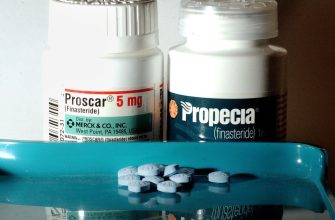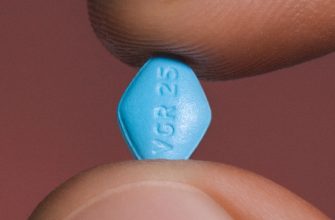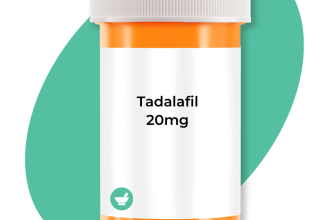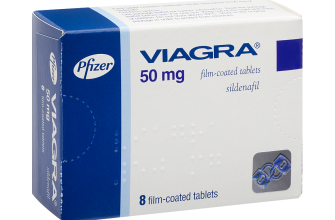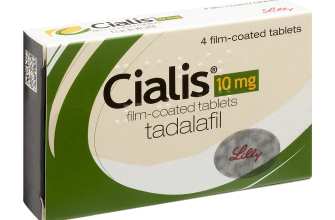Monitor your health closely while taking Norvasc, as this medication can cause various side effects that warrant attention. Common reactions include dizziness and swelling, particularly in the ankles and feet. These symptoms may indicate that your body is adjusting to the medication or could be a sign that your dosage needs reevaluation.
Be aware that Norvasc can lead to more severe complications, such as rapid heartbeat or chest pain. If you experience these symptoms, it’s crucial to consult your healthcare provider immediately. They can assess whether these reactions are linked to your treatment and what steps to take next.
Additionally, some patients report fatigue or flushing. While these effects are usually mild, they can affect daily activities. Staying hydrated and avoiding alcohol may help manage these symptoms. Always communicate any concerns with your doctor to ensure you receive the best care possible.
- Detailed Guide on Side Effects of Prescription Drug Norvasc
- Common Side Effects
- Serious Side Effects
- Understanding Norvasc: An Overview of the Medication
- Common Side Effects Experienced by Norvasc Users
- Dizziness and Fatigue
- Constipation and Heart Palpitations
- Rare but Serious Side Effects of Norvasc
- Cardiovascular Issues
- Liver Complications
- Factors That May Increase the Risk of Side Effects
- Age and Health Status
- Drug Interactions
- Managing Mild Side Effects While Taking Norvasc
- Adjusting Lifestyle Habits
- Monitoring and Communication
- When to Seek Medical Attention for Norvasc Side Effects
- Monitor Your Health
- Understand Common Side Effects
- Potential Drug Interactions That Affect Norvasc Side Effects
- Common Drug Interactions
- Considerations with Other Medications
- Patient Experiences: Real-Life Reports on Norvasc Side Effects
Detailed Guide on Side Effects of Prescription Drug Norvasc
Norvasc (amlodipine) can cause various side effects. Commonly reported reactions include dizziness and swelling in the legs or ankles. These effects result from blood vessel dilation, which eases heart workload.
Common Side Effects
Among the frequent side effects are:
- Dizziness or lightheadedness
- Swelling in the extremities
- Fatigue
- Flushing
If these symptoms appear, monitor your condition. Adjusting the dosage under physician guidance may help alleviate discomfort.
Serious Side Effects
In rare cases, Norvasc can lead to more severe issues. Be alert for:
- Rapid heartbeat or palpitations
- Severe allergic reactions
- Liver problems, indicated by unusual fatigue or jaundice
- Chest pain
Seek immediate medical attention if any serious side effects occur. Regular follow-ups with your healthcare provider ensure that any emerging issues are managed effectively.
Understanding Norvasc: An Overview of the Medication
Norvasc, known generically as amlodipine, primarily treats high blood pressure and certain types of angina. It belongs to a class of drugs called calcium channel blockers, which work by relaxing blood vessels, making it easier for the heart to pump blood.
This medication is often prescribed for patients who experience hypertension or chest pain due to heart conditions. By improving blood flow, Norvasc helps to reduce the risk of heart-related complications. It’s usually taken once daily, with or without food, making adherence simpler for patients.
Common side effects include swelling in the hands or feet, flushing, and dizziness. These effects typically diminish as the body adjusts to the medication. However, any persistent or severe reactions should prompt a discussion with a healthcare provider.
Norvasc can interact with other medications, so it’s essential to inform your doctor of all prescriptions and over-the-counter drugs you are taking. Adjustments in dosage may be necessary based on other treatments or health conditions.
Patients should monitor their blood pressure regularly while on Norvasc to ensure the medication is maintaining effective control. Sudden discontinuation can lead to increased blood pressure; consult a healthcare provider before making any changes to the regimen.
Following your doctor’s instructions on dosage and schedule is vital for maximizing the benefits of Norvasc while minimizing risks. Regular follow-ups can help assess the medication’s effectiveness and make any necessary adjustments tailored to individual needs.
Common Side Effects Experienced by Norvasc Users
Users of Norvasc may encounter several common side effects. Awareness of these effects can help in managing them effectively. One frequently reported side effect is swelling in the ankles or feet. This condition occurs due to fluid retention. If you notice significant swelling, consult your healthcare provider for advice.
Dizziness and Fatigue
Dizziness is another side effect that some users experience, especially when standing up quickly. To mitigate this, rise slowly from sitting or lying positions. Fatigue may also occur, leading to decreased energy levels. Engaging in light activities and ensuring adequate rest can help alleviate tiredness.
Constipation and Heart Palpitations
Constipation can be troublesome for some, impacting daily comfort. Staying hydrated and consuming fiber-rich foods may promote regular bowel movements. Additionally, users might notice heart palpitations. If these become frequent or concerning, reach out to your doctor for further evaluation.
Staying informed about these common side effects can enhance your experience with Norvasc and ensure prompt attention to any unusual symptoms. Always discuss any side effects with your healthcare professional to tailor your treatment plan accordingly.
Rare but Serious Side Effects of Norvasc
Monitor for any signs of allergic reactions, such as rash, itching, or swelling of the face, lips, or tongue. If these occur, seek medical attention promptly.
Cardiovascular Issues
Be vigilant for symptoms like rapid heartbeat, chest pain, or fainting. These symptoms may indicate serious cardiovascular effects, including hypotension or arrhythmias. If you experience any of these, contact your healthcare provider without delay.
Liver Complications
Watch for jaundice, dark urine, or abdominal pain, which can signal liver problems. Routine liver function tests can help catch complications early.
Notify your doctor if you experience severe headaches or vision changes. Although rare, these may point to elevated intracranial pressure. Early detection is crucial for addressing these serious side effects effectively.
Stay informed about your medication and ensure regular follow-ups with your healthcare provider to mitigate any potential risks associated with Norvasc.
Factors That May Increase the Risk of Side Effects
Certain conditions and lifestyle choices can elevate the likelihood of experiencing side effects from Norvasc. Adjusting these factors may help mitigate risks associated with the medication.
Age and Health Status
Older adults typically face a higher risk of side effects due to age-related changes in metabolism and organ function. Pre-existing health conditions, such as liver or kidney issues, can also intensify the impact of Norvasc, requiring careful monitoring and dosage adjustments.
Drug Interactions
Combining Norvasc with specific medications, like certain antifungals or antibiotics, may result in heightened side effects. Always disclose all medications, including over-the-counter drugs and supplements, to your healthcare provider to assess compatibility.
Genetic factors may influence your body’s response to Norvasc. Pharmacogenomic testing can provide insights into how your unique genetic makeup affects medication metabolism, enabling personalized medication management.
Maintaining a balanced diet and managing hydration levels can also play a role. Some foods may alter the absorption of Norvasc, affecting its efficacy and side effect profile, making attention to nutrition essential.
Lastly, lifestyle habits, such as smoking and excessive alcohol consumption, can complicate treatment with Norvasc. Reducing these habits may improve overall health and minimize adverse effects.
Managing Mild Side Effects While Taking Norvasc
Focus on hydration. Drinking plenty of water aids in minimizing side effects like swelling and dizziness. Aim for at least 8 glasses a day. Adjust this based on activity level and climate.
Adjusting Lifestyle Habits
- Dietary Changes: Incorporate potassium-rich foods like bananas and spinach. This can help counteract potential imbalances caused by Norvasc.
- Regular Exercise: Engage in moderate activities like walking or swimming. Exercise promotes circulation and can alleviate mild swelling.
- Sodium Intake: Reduce salt consumption. A lower sodium diet minimizes fluid retention, which helps manage swelling.
Monitoring and Communication
Keep a daily log of any side effects experienced. Note their severity and frequency to discuss during your next medical appointment. This information aids healthcare providers in adjusting your treatment plan if necessary.
Don’t hesitate to reach out to your doctor if side effects become bothersome. They can provide specific guidance tailored to your situation and may adjust your dosage or suggest alternatives.
When to Seek Medical Attention for Norvasc Side Effects
If you experience severe side effects while taking Norvasc, seek medical attention immediately. Recognize these conditions that may indicate a serious reaction:
- Severe dizziness or fainting
- Swelling of the face, lips, tongue, or throat
- Rapid or irregular heartbeat
- Chest pain or discomfort
- Persistent dry cough or trouble breathing
Consult your healthcare provider if you notice any of the following symptoms:
- Unexplained weight gain or swelling in the legs and ankles
- Severe headaches or migraines
- Skin rash or unusual itching
- Changes in vision
Monitor Your Health
Keep track of any side effects that develop after starting Norvasc. Report new or worsening symptoms to your doctor, especially if they interfere with daily activities. Regular follow-ups can help ensure your treatment remains safe and effective.
Understand Common Side Effects
While some side effects may be mild, such as flushing or headache, persistent issues require medical input. Always prioritize your well-being and don’t hesitate to reach out for help when in doubt.
Potential Drug Interactions That Affect Norvasc Side Effects
Consult your healthcare provider before combining Norvasc with other medications. Several drugs can alter the way Norvasc works or amplify its side effects. This includes medications for blood pressure, heart conditions, and certain anti-fungal treatments.
Common Drug Interactions
Drugs such as ketoconazole and itraconazole, both anti-fungal agents, may increase the blood levels of Norvasc, enhancing the risk of side effects like swelling, dizziness, or rapid heartbeat. Inform your doctor if you are using these medications to adjust your dosage if necessary.
Certain blood pressure medications, especially beta-blockers like propranolol, can also interact with Norvasc. This combination may lead to an increased likelihood of hypotension (low blood pressure) or bradycardia (slow heart rate). Monitor your blood pressure and heart rate regularly in this case.
Considerations with Other Medications
Antibiotics such as erythromycin can interfere with the metabolism of Norvasc, leading to higher concentrations of the drug in your system. This interaction necessitates close monitoring for any enhanced side effects.
Furthermore, medications for epilepsy, such as phenytoin, can lower the efficacy of Norvasc by increasing its metabolism. Regular follow-up with your healthcare provider will help ensure that your treatment remains effective.
Always keep your healthcare provider informed about all medications you take to minimize risks and maximize the benefits of your Norvasc therapy.
Patient Experiences: Real-Life Reports on Norvasc Side Effects
Patients taking Norvasc often share similar experiences regarding side effects. Common reports include dizziness, swelling, and fatigue. Monitoring these effects closely can help manage discomfort. If you encounter significant swelling in your legs or feet, consult with your healthcare provider promptly. Reviewing dosage adjustments may alleviate these symptoms.
Some users have reported gastrointestinal issues such as nausea or stomach pain. Keeping a food diary to identify any specific triggers may aid in minimizing these effects. Staying hydrated also plays a key role in supporting digestive health during treatment.
Headaches are another frequent side effect. Regularly taking over-the-counter pain relief may provide relief; however, discuss persistent headaches with your doctor. A medication review might be necessary to rule out interactions with other prescriptions.
Sleep disturbances have surfaced in patient feedback. Establishing a bedtime routine can improve sleep quality. If sleep issues persist, it’s beneficial to talk to your healthcare provider about possible solutions.
Monitoring blood pressure and pulse regularly allows patients to stay informed about their condition while taking Norvasc. If any unusual changes occur, reporting them immediately to your doctor enhances safety.
| Reported Side Effect | Patient Recommendations |
|---|---|
| Dizziness | Stand up slowly; consult a doctor if severe |
| Swelling | Elevate legs; discuss dosage with your provider |
| Nausea | Keep a food diary; drink plenty of water |
| Headaches | Use OTC pain relievers; notify your doctor if persistent |
| Sleep disturbances | Maintain a bedtime routine; consult your doctor if necessary |
Sharing experiences with Norvasc helps build a supportive community. Engage with others who understand the journey, as this can empower individuals to manage their health more effectively.


